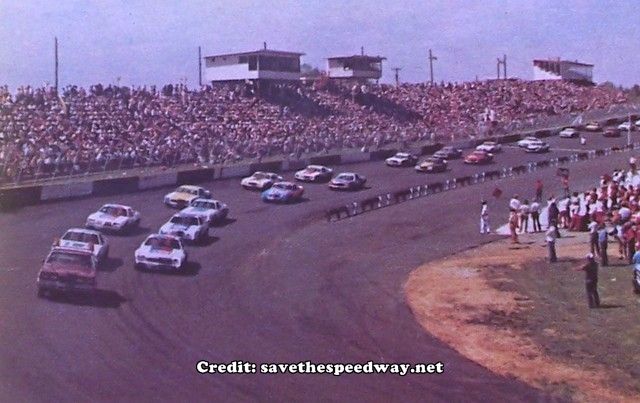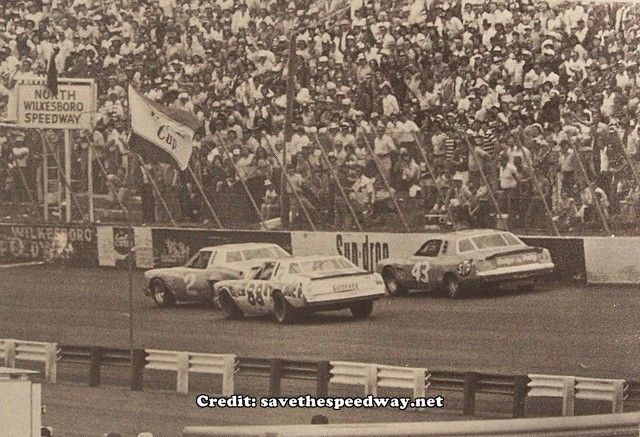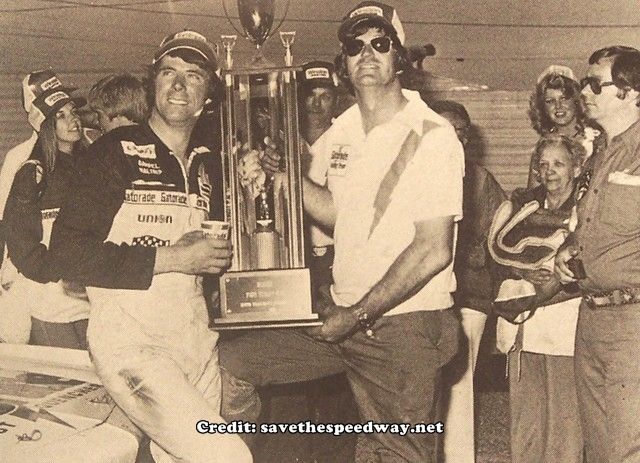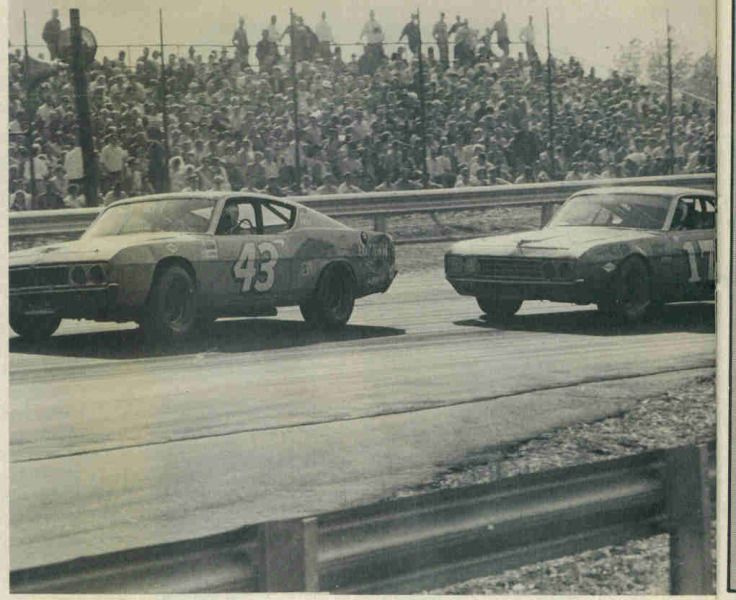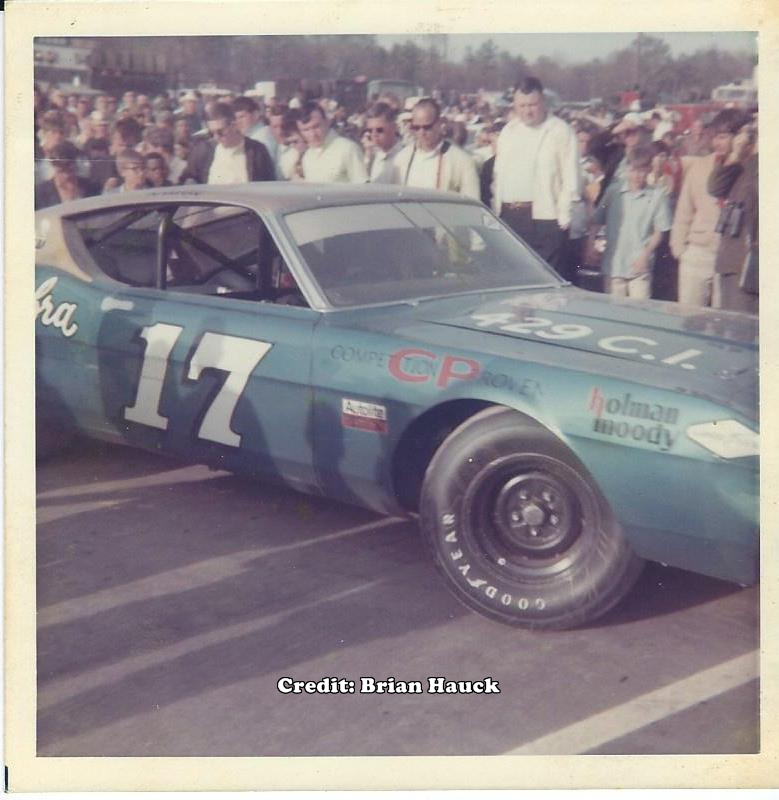Oldsmobile had its place in racing, particularly NASCAR. In the mid to late 1950s, Lee Petty fielded cars for himself and often other drivers. The race car of choice during that time was an Oldsmobile Delta 88. Other Petty drivers included the likes of Bill Lutz, Tiny Lund...
 |
| From Andy Towler at RacersReunion.com |
 |
| Final photo taken of Bobby Myers courtesy of Randy Myers |
 |
| Courtesy of Don Smyle / Smyle Media |
 |
| TMC Photo |
Midway through 1978, the Dodge was no longer competetive. The Pettys made a logical - yet unpopular to many - decision to switch to Chevrolet. The team ran a purchased Monte Carlo the rest of the season until they could begin to build their own.
In the off-season, the team expanded its General Motors fleet beyond just the workhorse Monte Carlo. As previously blogged, a Caprice was built to run several of the short tracks. And for the superspeedways, the Pettys returned to the name brand with which Richard started: Oldsmobile.
1979 Daytona 500 - This race is perhaps the most well-known race for the 43 442. With a solid Petty blue hood and no STP oval because of an on-going financial chess match between STP and the Pettys, the newly built 442 won its debut race.
1979 Atlanta 500 - This 442 started and finished 11th with a one-time, unique look. The STP oval was back on the hood - but a small one. And a series of varying sized STP decals were applied to the quarter panels.
1979 Southeastern 500 - The 43 finished a strong 4th at Bristol in the first of only two short-track races for the 442.
 |
| Credit: Woody Delbridge |
 |
| Credit: David Allio / RacingPhotoArchives.com |
 |
| Courtesy of Ray Lamm |
1979 Mason-Dixon 500 - Petty's Olds was wiped out in lap 2 accident at Dover. The 442 finished 30th in the 31-car field. Richard was hurt badly enough that he needed relief help from Jimmy Insolo three races later in Riverside, California.
 |
| Credit: Lee Greenawalt |
1979 Talladega 500 - The race earned double-chicken money for the Petty teams. Richard finished fourth in his Olds to match his P4 from the spring's Winston 500, and Kyle finished ninth in the Dodge Magnum in his debut Cup race.
After the second Talladega race, the Olds was parked in favor of the Monte Carlo and Caprice. The two Chevy cars were used in the stretch run as Richard successfully battled Waltrip for the championship. With his seventh title in the books, the team went back to work readying for 1980. The team went with what worked before, and they again prepared the 442 to defend their title at Daytona.
1980 Daytona 500 - This one was my first Daytona race to see in person. I watched from atop a small motorhome in the infield and was mesmerized by the brilliantly-bright, day-glo red despite the great distance from me to the track. Though King won the 500 for the 6th time in 1979 and his 7th and final time in 1981, my first trip wasn't a good day for the King or the Olds. After starting 4th, the 442 broke a clutch and Petty finished a disappointing 25th.
Adding insult to injury was that Kyle missed his first Daytona 500 after wrecking his hand-me-down Dodge Magnum in his 125-mile qualifier. The accident started when Nashville's Gary Baker spun and wrecked coming out of turn 4 in his #4 ... Olds 442.
 |
| TMC Archives |
 |
| Credit: Robert Turner |
 1980 Firecracker 400 - After a miserable first two races at the superspeedways, Richard finished a respectable fifth in Daytona's summer scorcher.
1980 Firecracker 400 - After a miserable first two races at the superspeedways, Richard finished a respectable fifth in Daytona's summer scorcher.1980 Talladega 500 - The previous week at Pocono, Richard suffered a terrible crash in his Monte Carlo. He spun, backed into the wall hard, and was then t-boned by Darrell Waltrip. He walked away from the crash - but his face showed obvious pain. Folks learned later that Richard suffered broken vertebrae in his neck. Amazingly, the safety crew didn't stabilize the King's neck after taking him from the car.
Yet, the King soldiered on. He belted into the Olds at Talladega long enough to start the race. A midday rain shower benefited the team. The race was started under a green-yellow flag (laps count, speed doesn't - a NASCAR rule I truly disdain). Richard completed one official lap and was therefore credited with the race's driver points. As he neared completion of the second lap, the 43 hit pit road. Previous Petty driver and crewman Joe Millikan qualified the car fifth and then jumped into the Olds to race the full event. Unfortunately for Millikan, however, Maurice Petty's engine soured as it did in the spring at Talladega. The 442 finished 18th after completing only 154 of the race's 188 laps.
 |
| Source: SportingNews |
In the end, the Pettys won only one modern-era race in an Olds. Yet in my opinion, the 442 remains one of the best looking rides from the Level Cross shops in that era.
A year or so after Petty Enterprises moved to a 110-inch wheelbase Buick Regal on the track...
...I began learning how to drive...
...in my parents' Oldsmobile...
...with a wheelbase far longer than 110 inches.
The car was a 1969 Oldsmobile Delta 88. The four-door sled had a 455 cubic inch engine. A true beast.
The Petty Olds? I miss it. My family's Delta 88? Ehh, not so much.
R.I.P. Oldsmobile
TMC

















